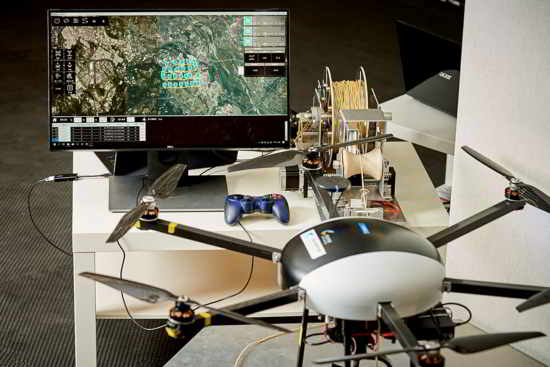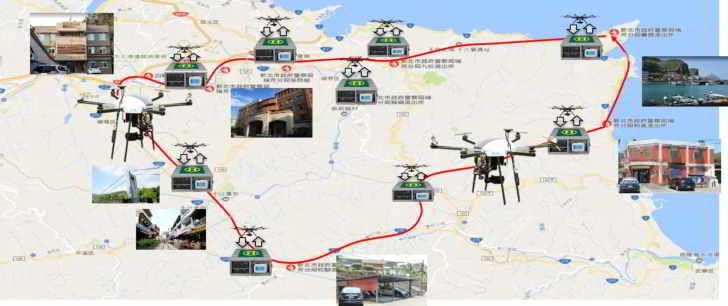
Views: 309
Unmanned aerial vehicles UAV (Drone) are increasingly popular for patrol and surveillance applications as they can be used to replace humans to perform tasks such as police security patrols, environment monitoring, and power system inspection.
Courtesy by ITRI: ITRI’s Automatic Police Drone Patrol System (APUPS), specially developed for police use, consists of a drone ground control station, a smart charging station, and multi-rotor drones with remote multi-radio and 4G/LTE video streaming technology. The system provides fully-automated patrols and security monitoring, vastly boosting the efficiency of the police force.
Some of Taiwan’s remote or scattered communities, with mountainous landscapes and poor road conditions, can be challenging for police to regularly patrol and may leave blind-spots in security. The introduction of ITRI’s APUPS can provide police security patrols with extensive deployment flexibility, service efficiency, and automation, thereby improving overall security.
In terms of deployment flexibility, the drone ground control station software runs on Windows, and can operate on most desktops or laptops. Secondly, users can send long-distance communications between the ground control station and the drone fleet via local LTE telecom networks or the system’s built-in long-distance wireless star network.

Regarding service efficiency, the APUPS can simultaneously control multiple drones, each of which has been assigned independent flight tasks. This creates parallelization and provides a high degree of droen autonomy for flight routes. Moreover, the system supports shift taking, in which another fully-charged drone will continue the flight route of a drone that needs to return to its charging base. For an aerial patrol that involves a route distance of 54 km, the task can be completed in 15 minutes by 11 drones, each flying 5 km. In other words, long-term, continuous patrol routes that were previously limited by power restrictions can now be achieved.
In terms of automation, the system features smart charging. Drones that are running low on power will land and recharge at nearby or designated charging bases and begin executing subsequent flight tasks after recharging.
Besides performing regular police patrols, ITRI’s APUPS can also be applied in emergency cases such as the wildfires in California. The patrol system can identify the fires’ starting points, monitor the entire process, and display smoothly-synced audio and visual signals at the ground control center, allowing firefighters to address the crisis more effectively while helping to minimize injuries.
In summary, ITRI’s APUPS is a system that minimizes human involvement and risks during regular patrols and rescue missions. The automated system coordinates with itself in smart charging and shift changing of drones and ensures the entire patrol system runs smoothly. The deployment of this system is expected to significantly increase patrol efficiency and surveillance quality for police.
Video of APUPS.
Related article: A future with “social drones”